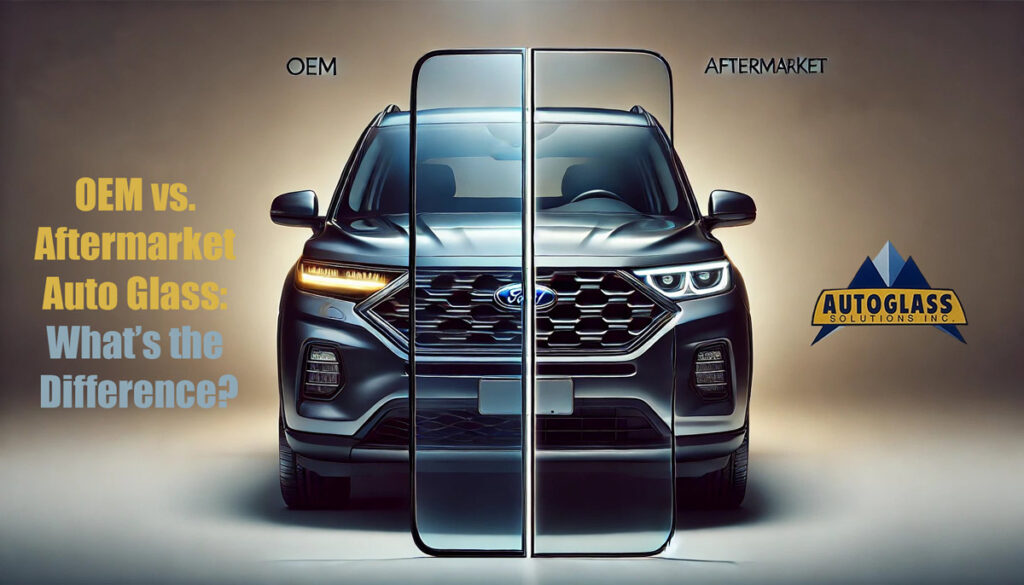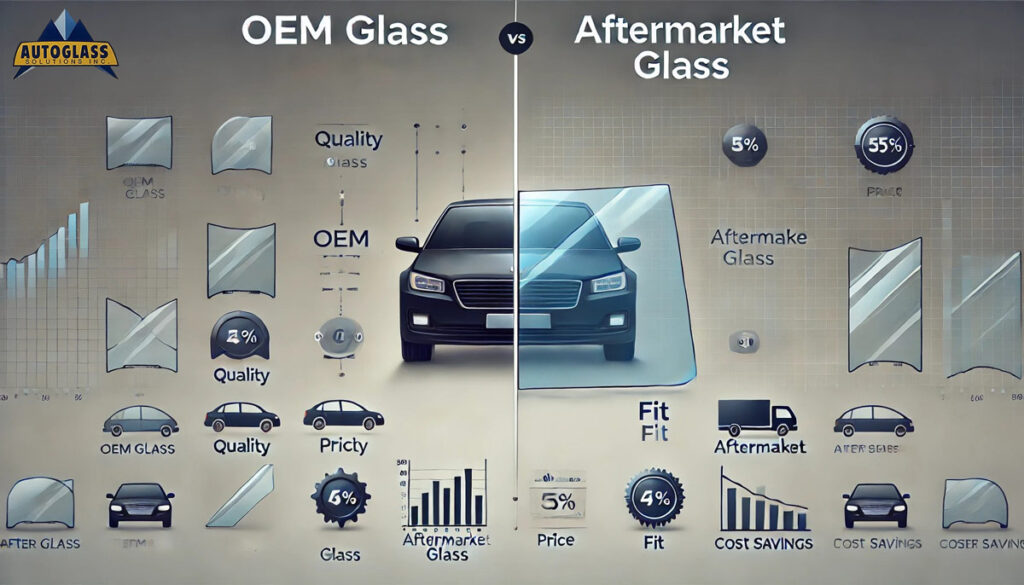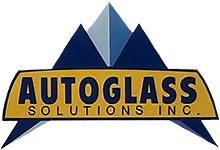The Importance of OEM vs. Aftermarket Auto Glass: What’s the Difference?

When it comes to auto glass replacement, vehicle owners are always faced with an important decision: Original Equipment Manufacturer glass versus aftermarket glass. It could make all the difference in safety, performance, and even the longevity of a vehicle. Knowing what separates OEM from aftermarket glass is what provides an assured choice for both quality and safety. This article details OEM vs. aftermarket auto glass, comparing its benefits, drawbacks, and factors that will significantly impact your choice.
Call (512) 241-1211 for our Special Offers on Auto Glass repairs and replacements!
What is OEM Auto Glass?
OEM auto glass originates from the same manufacturer that supplies the original glass installed in the vehicle at the time it is built. It is made out of materials to meet and even exceed the standard specifications that were originally called for about thickness, color, fit, and finish. One of the most important advantages related to OEM auto glass is that it is designed with exact dimensions so that the contour of a vehicle can be properly fitted for installation and maximum safety.
What is Aftermarket Auto Glass?
On the other hand, aftermarket auto glass is made by a company that is not directly linked to the original car maker. Even though some aftermarket glass is occasionally much cheaper, it might not be similarly crafted in every respect as the original glass. This can cause fit and finish issues and, in some cases, even impact the operation of some vehicle systems—especially newer safety features. Pros and cons of aftermarket windshields are something that the car owner needs to know in detail, so they can make the right decision for their vehicle.
The Difference Between OEM and Aftermarket Glass

The difference between OEM and aftermarket glass goes beyond branding and price tags. OEM glass design accommodates the exact specifications required by your vehicle’s make and model. It will possess a perfect fit, durability, and compatibility with the vehicle’s safety features. At the same time, the thickness of aftermarket glass may differ, along with color and even shape. These differences quite often present fit issues with aftermarket windshields and may even jeopardize the integrity of the vehicle in a possible accident.
– Benefits of OEM Auto Glass
This windshield differs from others in that it integrates into the vehicle’s features. This is especially true with cars that come fitted with Advanced Driver Assistance Systems, which include lane departure systems, adaptive cruise control, and automatic emergency braking. These depend on cameras and sensors sometimes mounted on or near the windshield.
OEM glass is manufactured to be compatible with ADAS systems. The installation of most replacement glass will bump these sensors out of alignment and cause them to malfunction or operate below par.
Another important benefit of OEM auto glass involves resale value. Vehicles that are properly serviced using OEM parts, including windshields, maintain their value more than those that have aftermarket components. This is because OEM parts are viewed as an indicator of quality service or maintenance done to a vehicle; this serves to assure any buyers who may buy the vehicle that it has been well taken care of.
Pros and Cons of Aftermarket Windshields
Aftermarket windshields, by dint of their low cost, are usually chosen. For owners operating on a tight budget, the dollar difference between the OEM and aftermarket glass can prove to be the decisive factor. However, it is something that has to be measured against potential downsides.
One major problem with aftermarket glass is the variation in quality. The inflexible OEM manufacturer’s safety requirements cannot be adhered to in aftermarket glass. This leads to a higher propensity to crack or shatter glass, which in the event of an accident could prove to be a very severe safety hazard.
OEM vs OEE Auto Glass
An additional difference is that of OEM and OEE in auto glass. OEE stands for Original Equipment Equivalent glass, built to the same standard but by someone other than the original equipment manufacturer. Typically, this will give a type of glass that is considered “middle of the road” when regarding quality versus value. Just like the aftermarket glass, OEE sometimes has slight variances that might affect the fit and performance of some vehicles.
Comparison in Prices: OEM vs. Aftermarket Glass
For the majority of vehicle owners, cost is one of the key decision points when considering OEM vs. aftermarket auto glass. In most cases, OEM glass is expensive based on the quality of the material and the high manufacturing standards in the preparation of the glass. Still, the higher upfront cost can be offset by long-term benefits including better safety and more durability and, hence, better resale value.
In contrast, aftermarket glass will generally be less expensive, hence more attractive to anyone who is watching their budget. When examining OEM vs. aftermarket glass based on cost, additional expenditures must be considered, like more frequent replacements due to lower quality or the eventual costs associated with recalibrating ADAS systems that don’t work properly with aftermarket glass.
– Resale Value of OEM Glass
OEM glass is superior to the aftermarket in resale value. Buyers usually show more interest in vehicles with OEM inclusions, like windscreens. This is because OEMs come to them as a solid symbol of maintenance and quality. An aftermarket part may present an argument leading to a conclusion of use as soft evidence of good repair practices or questionably frugal repair tactics.
Fit and Installation Problems with Aftermarket Windshields
Aftermarket windshield installation could also bring out issues. Since aftermarket glass is not manufactured to the exact specifications of the vehicle, fitting and finishing may be a problem. This can lead to leaks and wind noise, which is an annoyance but may also, in the long run, be damaging to the vehicle. Aftermarket windshield fit issues could indicate a structural problem in a vehicle, especially in a rollover accident, where a windshield is significant in supporting a roof.
– OEM Glass Strength and Warranty
Another important factor to consider is durability. Thus, it is built to the measures and specifications passed by the manufacturer, the OEM glass is durable and should withstand the forces while driving. It should protect the drivers when hit by a rock chip. Most OEM glasses come with a full warranty both for materials and workmanship, which brings more peace of mind to car owners.
– Aftermarket Glass Safety Concerns
Safety is always a concern whenever one seeks to replace auto glass. As outlined, one of the major concerns that surrounds the aftermarket glass is about sporadic quality and safety standards. Concerns regarding safety in following the use of aftermarket glasses arise from the fact that regulated standards are not always followed in the manner in which they are implemented in OEM glasses. This can lead to either glass that breaks more easily or glass that does not break through and, in failure during a crash, poses a significant hazard to the passenger.
Do you need a quick Windshield Replacement? Call (512) 241-1211 Now and Get a Quote!
Factors to Consider in Choosing Auto Glass
In choosing auto glass between OEM and aftermarket, there are several factors to consider:
– Vehicle Age and Value
Where new or high resale value for a vehicle is concerned, OEM glass is almost always the preferable product offering. The vehicle will remain in its original form, retaining the value it should possess. In older vehicles where the resale value doesn’t carry such importance, the cost savings from aftermarket glass might make it much more interesting.
– Technology and Features
The replacement of auto glass in all vehicles equipped with ADAS systems raises important concerns. OE glass for ADAS systems is designed to be compatible with technology; the use of OE glass ensures technology functions the way it was intended to. Using “aftermarket” glass can throw off the alignment of sensors and cause them not to function properly or at a reduced capacity.
– Budget
This would be a big factor for many vehicle owners. While OEM glass tends to be expensive, it could provide greater value in the long run where durability, fit, and warranty are concerned. Aftermarket glass comes cheaper upfront but may need more frequent replacements or adjustments, especially if quality or fit problems crop up.
– Environmental Conditions
If living in an area that experiences very hot weather or even hail such as Austin, one would have a more robust, better-performing glass with OEM features. This is because the glasses are tested against a wide range of environmental conditions to ensure continuing performance. Aftermarket glass may not be quite so resilient, depending on its quality.
OEM Glass for Luxury Cars

The fact is, that many luxury vehicles contain unique design features and cutting-edge technology that favors OEM glass. The glass used for luxury vehicles is made to match these high-flying machines perfectly with any special kind of tinting, coating, or curvature in the design of a car. The potential of a serious color or optical mismatch with a luxury vehicle when the windshield is replaced with an aftermarket piece of glass results in an effect on the vehicle that will be visible and performance-based.
The advancements in automotive technology being introduced will make OEM versus Aftermarket auto glass very prominent. The anterior systems, such as heads-up displays, and other advancements in ADAS, have increased the need for very stringent accuracy in the way auto glass is manufactured and installed. OEM glass manufacturers are already actively innovating products that can accommodate these newer technologies and further improve safety standards as they continue onward.
In sharp contrast, the rate of change could be so high within the aftermarket glass sector that they do not have time to catch up, especially if their access to the specifications for any new technology is limited. This possibility would further create disparity in quality and safety between OEM and aftermarket, hence a very relevant issue to auto glass choice.
How to Choose the Right Installer for Your Auto Glass
Regardless of original or aftermarket auto glass, consider hiring a good and certified installer. He will go through the necessary training to make sure that your windshield installation is done right, be it an OEM windshield replacement or an aftermarket windshield installation. This is crucial not just for the fit and function but especially with all the safety features of your vehicle. This is why you can trust the professionals at Auto Glass Solutions.
Look for an installer who has the following certifications
Auto Glass Safety Council (AGSC) or affiliations with your car’s manufacturer. Most of the time, if the installer has such credentials, it means they have some specifications of safety and quality to maintain in an installation process. You can also read customer reviews and inquire from others to get a trusted installer to get a job that is up to standard.
Over the past few decades, the use of auto glass has undergone significant advancement ever since it was used to protect the driver and the passengers from adverse weather conditions. In today’s technological and innovative times, windshields are classified under the safety and technology components of a vehicle. For instance, most of them are installed with acoustic interlayers to reduce the level of road noise or with solar-coated layers to keep off excessive heat from the car’s interior.
Typically, the OEM glass uses the incorporation of all this technology by design, whereas in its absence, much of the available technology would not be incorporated into aftermarket glass. Now, with advances in automotive technology, the gap is going to widen between the OEM and the aftermarket manufacturer, especially in the effective integration of smart and connected vehicle technology.
ADAS Recalibration is also quite important
Glass selection becomes only part of the equation when your vehicle has an ADAS. An ADAS is reliant on quite meticulous alignments and calibrations, so even a slight deviation can result in system error. OEM glass for an ADAS system is always purpose-designed for a perfect fit with no unnecessary tolerances in mounting that might affect calibration.
This might require extra touchpoints for recalibration just because aftermarket glass can differ slightly in shape or thickness. In some cases, the inconvenience and increased expense of recalibration with aftermarket glass contradict how much a driver might have saved using this lower-cost option in the beginning. Keep these additional costs and potential hassles in mind as you decide between OEM and aftermarket auto glass.
Effects of Glass Quality on the Driving Experience
The quality of your windshield may directly impact the quality of your driving. High-quality glass, like OEM auto glass, gives you clear vision with minimal distortion—a critical aspect of safe driving. In contrast, low-quality glass, like that contained in several of the affordable aftermarket alternatives, surprisingly results in visual distortions—leading not just to eye strain, but also slower response times, specifically at night and in bad weather.
OEM glass generally uses a clear surface quality, a feature that has smoother water runoff unseen by the naked eye, and thus provides less dependency on windshield wipers. Aftermarket glass could break in these areas, causing the driving experience to be reduced over time and possibly be less safe and more tiring.
Deciding What’s Best for Your Vehicle
It often becomes a game of cost and quality versus peace of mind and safety. Newer vehicles, vehicles with advanced safety systems, or people who want to meet vehicle specification requirements should use OEM glass. An OEM glass product offers the best fit and the best quality when compared to anything else. An OEM usually will warrant the product for life against all types of stresses and problems.
While aftermarket glass may be perfectly fine for those on a tighter budget with older vehicles—and you might come out just fine if you choose a high-quality maker—equally important is balancing this against some potential downsides: worries over safety, potential fit issues with aftermarket windshields, and a possible further recalibration of vehicle systems.
Conclusion
In conclusion, both OEM and aftermarket parts have their places in the marketplace, but your specific needs, vehicle type, and budget should guide your choice. Given the understanding of the difference between OEM and aftermarket glass, and the pros and cons of aftermarket windshields, one has to consider issues of safety and quality alongside cost before making a decision. Bear in mind that this is not just a matter of replacing glass but keeping your vehicle providing safety, comfort, and reliability for as long as you own the vehicle.
The free estimate for our mobile windshield service is just a dial away, (512) 241-1211. Make that call now and get fast and efficient help!
FAQ
Do you replace auto glass with an OEM windscreen?
No, at Autoglass Solutions we only use glass manufactured to Original Equipment Manufacturer (OEM) standards, whether sourced directly from original equipment manufacturers or other suppliers.
What is the difference between OEM and OEE glass?
The same quality norms with the OE or OEM glass will not have the manufacturer’s logo like the OE or OEM windshield inscribed on it. OEM windshields are the most expensive, mainly because of their exact fit, good quality, and the attached value of the company brand of the original manufacturer.
Does aftermarket glass have the same quality as the original OEM part?
OEM glass will be the safest alternative available, and dealers generally will not even lease vehicles with aftermarket glass, which may be cheaper but is also often less effective and of lower quality. OEM glass is superior in terms of safety compared to aftermarket glass, where the quality is often not guaranteed to meet the standards for safety
How do you know when it is OEM glass?
OEM windshields will often have a special mark or logo imprinted usually in one of the corners. Some manufacturer’s marks could be their logo, the brand name, or coded inscriptions. This is the first thing you would check out.
Get Your Windshield Cracks Fixed In Austin TX
Start right here in Austin, TX, with Auto Glass Solutions. We are only here for all of your vehicle sparkle needs. Our top-of-the-line services can tend to all window replacement needs—from new windshields and safety equipment calibration.
And you know what? We do it all with mobile service. After all, life is an adventure! Trust us for all your auto glass needs. Learn more about our services on our website, Auto Glass Solutions.
Want a better windshield? Auto Glass Solutions is the place.
Come in or call (512) 241-1211 to discuss your windshield repairs and windshield replacements, and get a quote. We would be happy to help you with that. Kindly visit the Contact page now to begin your journey into the land of beautiful windshields!
